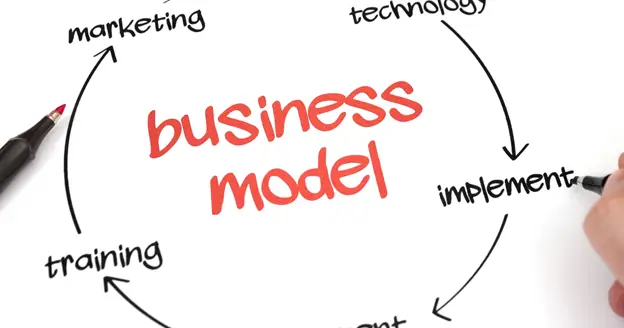Want to start a business that makes money consistently? Here’s how to create a profitable business model that actually works, step-by-step, no fluff.
Starting a business is exciting. But if you don’t figure out how to make it profitable, all you’ve got is an expensive hobby.
You can have the best product, the slickest logo, and the nicest website… but if your business model doesn’t bring in consistent money (and leave room for growth), you’re setting yourself up for stress.
So today, I want to walk you through how to create a profitable business model—one that actually works in the real world, not just on paper.
This isn’t about guessing or copying what someone else is doing. It’s about building something that’s sustainable, makes sense for your lifestyle, and brings value to your customers.
First, What Is a Business Model?
A business model is simply how your business makes money.
It answers questions like:
- Who are you serving?
- What are you offering them?
- How do they pay you?
- How do you keep the money flowing?
Without a clear business model, you’ll burn out fast, either chasing the wrong customers or spending too much to deliver the thing you’re selling.
1. Start With the Problem You Solve
Before thinking about pricing, marketing, or even a business name, you’ve got to ask:
What problem am I solving? And who has that problem bad enough to pay for it?
Examples:
- A virtual assistant solves overwhelm for busy entrepreneurs.
- A dog walker solves time gaps for pet owners with 9–5 jobs.
- An SEO consultant solves low visibility for online businesses.
People don’t pay for random services. They pay to solve pain.
So, get super clear on what problem you solve, and make sure there’s demand for that solution.
2. Know Exactly Who You’re Selling To
One of the fastest ways to kill your profits is trying to serve everyone.
Instead, ask:
- Who needs this the most?
- What do they care about?
- What are they already spending money on?
Get specific. You don’t need a massive audience, you need a clear one.
Once you know who you’re serving, everything else (your offer, your pricing, your messaging) becomes easier to shape.
3. Decide on a Simple, Sustainable Offer
Now it’s time to build your actual offer, what are you going to sell?
This can be:
- A physical product
- A service or package
- A membership or subscription
- A digital product or course
- A done-for-you solution
Whatever it is, keep it simple. Complexity is the enemy of profit in the beginning.
Instead of 10 different offers, start with one that solves a clear need and delivers value without draining your time or energy.
4. Set Pricing That Supports Profit (Not Just Sales)
If you want to know how to create a profitable business model, pricing is a huge part of it.
Too many people undercharge because:
- They want to “seem affordable”
- They’re afraid no one will buy
- They base prices on emotion, not numbers
But here’s the truth: profit doesn’t just happen. You have to build it in.
Look at:
- Your cost of goods or time
- Any software/tools you pay for
- Taxes, payment fees, and delivery costs
- How much margin you want left over
Then price accordingly. You’re not being greedy, you’re being smart.

5. Map Out How You’ll Deliver the Offer
Don’t just think about the sales think about what happens after.
- How does the customer get what they bought?
- What tools or systems do you need?
- How will you keep them happy and coming back?
If delivery is clunky or slow, you’ll spend all your time fixing problems instead of growing. So, build a smooth system from the start, even if it’s just a checklist and a Google Doc.
6. Choose a Simple Sales & Marketing Path
You don’t need a 10-step funnel to start making money. You just need a clear way to reach your people and tell them what you offer.
Examples:
- If you’re a service provider, connect on LinkedIn or run targeted Facebook ads.
- If you sell physical products, start with Instagram and an email list.
- If you’re teaching or coaching, webinars or live classes work well.
Whatever you choose, focus on consistency over complexity. One or two good channels are better than five half-baked ones.
7. Track the Numbers That Actually Matter
A lot of people get caught up in vanity metrics, like followers, likes, or views.
But if you’re learning how to create a profitable business model, the numbers that matter are:
- Customer acquisition cost (CAC): how much you spend to get a customer
- Customer lifetime value (LTV): how much one customer spends over time
- Profit margin: how much you keep after expenses
- Conversion rate: how many people take action once they find you
When you know these numbers, you can make smart decisions instead of wild guesses.
8. Refine, Don’t Restart
Here’s where a lot of business owners mess up, they think if something doesn’t work immediately, they have to start from scratch.
But in most cases, you just need to tweak:
- The way you describe your offer
- Who you’re targeting
- How you’re pricing
- The delivery method
A profitable business model isn’t built in one day. It’s shaped over time through feedback, small tests, and paying attention to what works.
Real Talk: Things That Kill Profit Fast
Just to be clear, here’s what to avoid if you want to stay in the green:
- Offering too much too soon
- Saying yes to every customer type
- Competing only on price
- Having no real system for delivery
- Failing to track what’s working
Profit doesn’t come from hustle. It comes from structure and smart decision-making.

Final Thoughts
If you’re serious about building a business that doesn’t just look good but actually makes money, then learning how to create a profitable business model is your first big step.
Start with a clear problem. Pick a simple offer. Know your numbers. And stay focused on delivering real value—without burning yourself out.
Your business should support your life, not run it.
And with the right model in place, it absolutely can.





